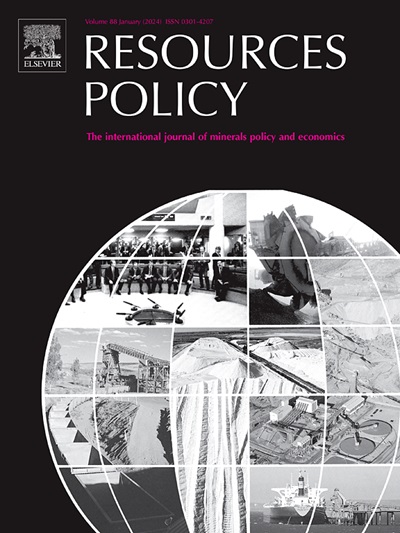Beneficial use of dimensional stone industry wastes in geotechnical fills: Geotechnical, environmental and economic perspectives
IF 10.2
2区 经济学
0 ENVIRONMENTAL STUDIES
引用次数: 0
Abstract
Efforts to recycle waste from the dimensional stone industry are vital due to its environmental impacts, hindered by limited inclusion rates and complex processing needs in current practices. Given the increasing demand for geotechnical fill materials and the depletion of natural soils, sustainable alternatives are necessary. The beneficial use (BU) of Dimensional Stone Processing Industry Wastes (DSPIWs) in geotechnical fills offers a novel solution, yet lacks a comprehensive evaluation. Following the USEPA approach, this study assesses the suitability of DSPIWs—specifically slurry generated in granite, sandstone, and marble processing—for geotechnical fills, examining their potential, relevant lifecycle stages, compatibility with geotechnical fill requirements, environmental concerns, and cost implications. Geotechnical investigations reveal that DSPIWs are non-plastic and non-swelling, with grain size distribution and hydraulic conductivity akin to silty sands. Maximum Dry Density ranges from 1.58 to 1.84 g/cm³ with minimal water-induced variation, and internal friction angles of 44.8° for granite, 40.2° for sandstone, and 36.5° for marble ensure high stability. Electrochemical analysis shows low leachability risks, with pH levels between 7.5 and 8.1 and electrical resistivity above 6200 Ω-cm. Heavy metal concentration in percolation-based leaching tests remains within allowable limits. A cost analysis of a typical embankment section using DSPIWs as fill material reveals a substantial cost reduction of nearly 52 percent compared to using natural soil. Considering the non-hazardous nature of DSPIWs, their compliance with geotechnical fill requirements, minimal environmental and health risks, and economic benefits, this study endorses their BU in geotechnical fills to cater waste disposal problem and advance resource conservation.

求助全文
约1分钟内获得全文
求助全文
来源期刊

Resources Policy
ENVIRONMENTAL STUDIES-
CiteScore
13.40
自引率
23.50%
发文量
602
审稿时长
69 days
期刊介绍:
Resources Policy is an international journal focused on the economics and policy aspects of mineral and fossil fuel extraction, production, and utilization. It targets individuals in academia, government, and industry. The journal seeks original research submissions analyzing public policy, economics, social science, geography, and finance in the fields of mining, non-fuel minerals, energy minerals, fossil fuels, and metals. Mineral economics topics covered include mineral market analysis, price analysis, project evaluation, mining and sustainable development, mineral resource rents, resource curse, mineral wealth and corruption, mineral taxation and regulation, strategic minerals and their supply, and the impact of mineral development on local communities and indigenous populations. The journal specifically excludes papers with agriculture, forestry, or fisheries as their primary focus.
 求助内容:
求助内容: 应助结果提醒方式:
应助结果提醒方式:


